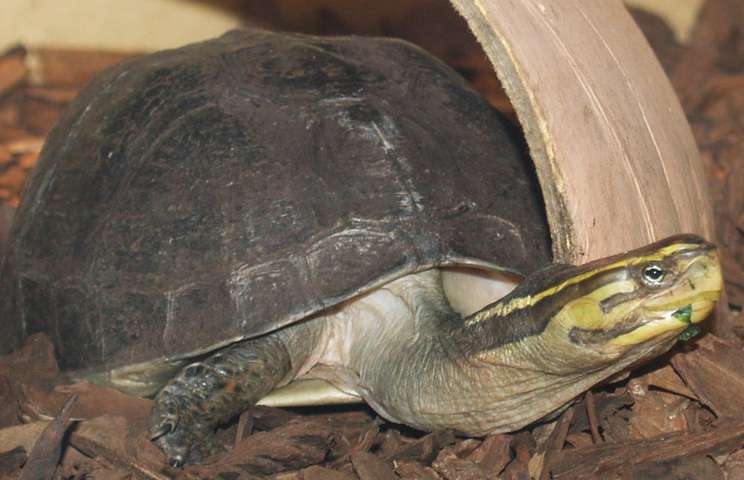
The Florida Peninsula is home to the Peninsular Cooter, which is closely related to the Coastal Plains/Florida Cooter and can be found in a variety of waters there. The Peninsular Cooter has a plastron that leans toward yellow, and its body is coated in yellow stripes. The Peninsular Cooter is a herbivore that consumes water vegetation, like the majority of cooters.
Care as a Pet

Heat
The peninsular turtle will occasionally move to the basking area throughout the day. This enables the turtle to warm up, dry off, soak up UVB, and rest. A decent basking location should be approximately 80 degrees Fahrenheit and have enough UV. For all turtles, more UVB lighting is necessary. UVB light is necessary for Peninsula Cooters to synthesize vitamin D. Peninsula Cooters are unable to effectively metabolize calcium without vitamin D (especially D3), which causes issues with bone formation.
The turtle’s basking area can be illuminated with a spot lamp and UV tube. Depending on the temps reached, either a 60w or 100w basking light should be adequate. To provide the intense UV, a 12% T5 or T8 intense UV tube can be used.
Housing
The enclosure for peninsula cooters must be a turtle tank. This is due to the tank’s requirement for entirely submerged parts free from warping or leakage. The Peninsula Cooter can reach a maximum length of 500mm (20″) and requires an equivalent amount of area to live comfortably. Due to this, we advise using a tank that is at least 1200 mm wide. We advise a minimum tank height of about 300mm because the tank must also be tall enough to allow spaces for the turtle to swim. To give the turtle a place to exit the water and relax, a ramp and dock should be used.
Feed
The Peninsula Cooter consumes a variety of aquatic items as well as meat and live foods. In the absence of fresh or live choices, they can also be fed dry foods; these should be made with shrimp or meat protein rather than plant material.
Brown crickets are the most often accepted, but you can also use black crickets, dubia cockroaches, or locusts, according to our research (hoppers). For the meat element of the turtles’ diet, other options include shrimp, salmon, mice, and chicks.
Table





